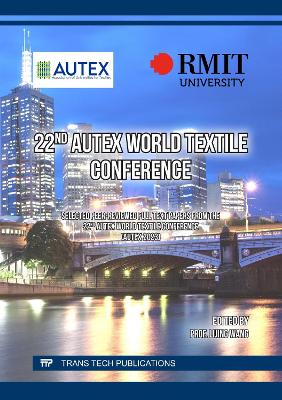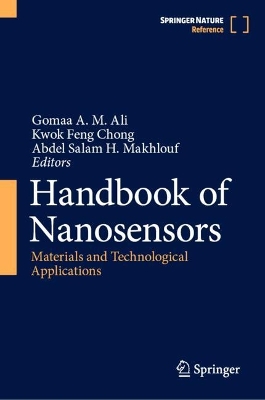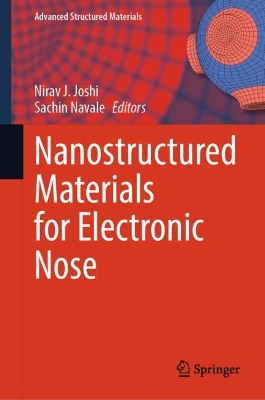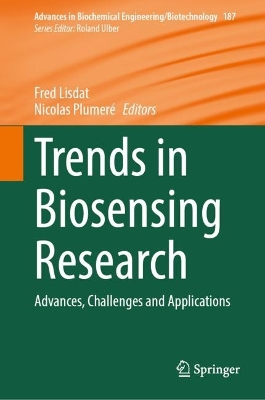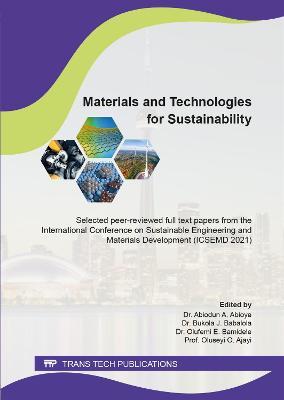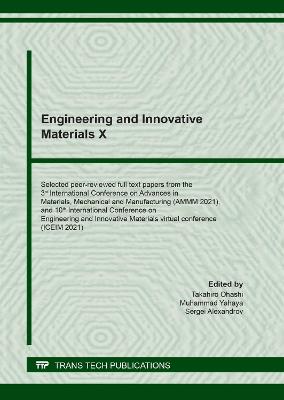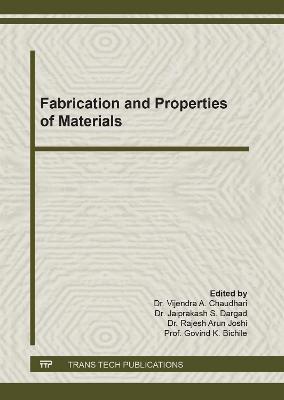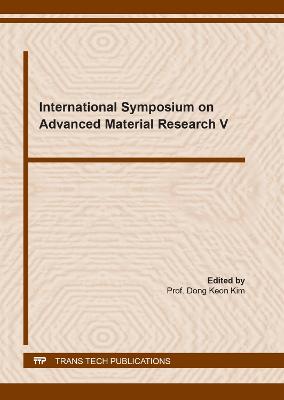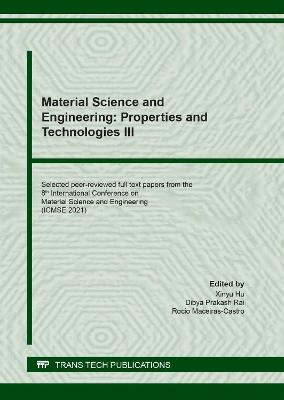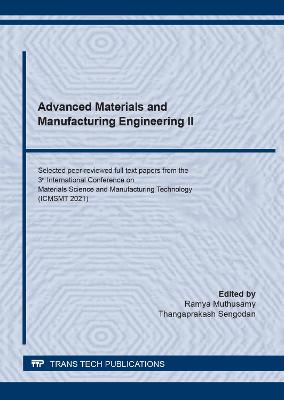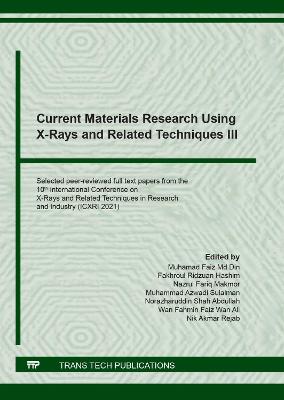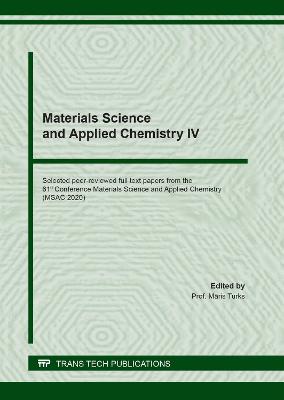22nd AUTEX World Textile Conference
 portes grátis
portes grátis
22nd AUTEX World Textile Conference
Wang, Li Jing
Trans Tech Publications Ltd
04/2024
322
Mole
9783036403014
15 a 20 dias
Chapter 1: Materials and Technologies of Textile Production
Characterization of Nanoporous Poly(Lactic Acid) Microfibers Using a Simplified Centrifugal Spinning Method
Ag Doping and rGO Coupling of TiO2 within Polysiloxane Matrix for the Ecofriendly Development of High-Performance Cotton Fabric
Novel Knit Structure with Adjustable Tensile Behaviour Based on Combined Weft/Warp Technology
Silica-Containing Phosphorus-Based Sol-Gel Finishing to Improve Flame Retardant Performance of Cotton Fabrics
Analysis of the Influence of Fiber Orientations in Carbon Fiber Reinforced Composites on their Structural Properties Based on Eddy Current Measurements
New Approaches to 3D Non-Crimp Fabric Manufacturing
Micromechanical Modelling of the Deformation Mechanisms of Friction-Spun Yarn from Recycled Carbon Fibres
Tensile Properties of Different Yarn Structures Based on Recycled Carbon Fibre for Sustainable Thermoset Composites
Computational Evaluation of Weaving Process on Mechanical Stiffness of Plain Weave Fabric
Development of a Process to Continuously Mercerise Loose-Stock Cotton
Comfort Properties and Antimicrobial Activity of Cotton and Nylon/PU Knits Treated with Microcapsules Containing Sea Buckthorn Oil
Chapter 2: Smart Textile and Functional Clothing
Weft-Knitted Strain Sensors for Motion Capture
Quantifying the Human Perception: Development and Characterization of Textile-Based Capacitive Strain and Pressure Sensors
Energy Consumption during the Wearing of Pantyhose
Enhanced Side-Illumination of Etched Polymer Optical Fiber (POF)-Incorporated Woven Polyester (PET) Fabrics
Environmentally Friendly Protective Coating for Electrically Conductive Yarns Using in Smart Textiles
Influence of Linear Density of Polyamide Plating Yarn on the Usage and Comfort Properties of Men's Cotton Socks
Performance Properties of Swimwear Fabrics Produced from Polyester and Recycled Polyester Fiber
Chapter 3: Measurements, Testing and Monitoring
Effect Evaluation of Repeated Compression for Tactile Hardening of Cotton Pile Towel by Indentation Test
Intelligent Identification of Chinese and Australian Merino Wool Fibers Based on Image Recognition
Neural Network Based Determination of the Degree of Fiber Mixing in Hybrid Yarns and Composites
In Situ Measurement of Twist Propagation and Yarn Tension with Superconducting Magnetic Bearing Twisting Element for Ring Spinning Process
Chapter 4: Ecological Aspects of Textile Production
Use of Rosa Canina Extractions for Ecofriendly Textile Finishing
Ecological Approaches in Yarn Dyeing
Influence of Laccase Enzyme on the Biodegradability of Indigo Blue Dyed 100% Cotton Fabrics
A Standard Terminology for the Description of Fibrous Microplastics from Textiles
Chapter 5: Supply Chain Management and Training in the Apparel Industry
Australian Cotton and the Global Apparel Supply Chain: Sustainability Issues in Context
Developing Training from Industrial Design to Innovative Design in Vietnam
The Presence and Effectiveness of Training Centres in the Apparel Industry
Disruptions and Adaptations: Covid-19's Impact on Textile Supply Chain Management
Chapter 6: Fashion Design and Development of Textile Industry
The Development of a Base Layer for a Sensorimotor Countermeasure Skinsuit: Garment Comfort and Mobility
Money Talks, Fashion Walks: A Textile Motif Exploration in Womenswear Using 1960s Rupiah Banknote
The Aesthetic Factors Shaping Chinese Millennial Consumers' Purchase Intentions of Luxury Pyjamas: Implications for Future Design
The Intersection of Fashion and Climate: A Comparative Examination of the Australian Fashion and Textile Industry's Approach to Climate Change
Lightness and Hue Dependencies of Color Difference Thresholds in Textiles under High-Illuminance Conditions
Chapter 1: Materials and Technologies of Textile Production
Characterization of Nanoporous Poly(Lactic Acid) Microfibers Using a Simplified Centrifugal Spinning Method
Ag Doping and rGO Coupling of TiO2 within Polysiloxane Matrix for the Ecofriendly Development of High-Performance Cotton Fabric
Novel Knit Structure with Adjustable Tensile Behaviour Based on Combined Weft/Warp Technology
Silica-Containing Phosphorus-Based Sol-Gel Finishing to Improve Flame Retardant Performance of Cotton Fabrics
Analysis of the Influence of Fiber Orientations in Carbon Fiber Reinforced Composites on their Structural Properties Based on Eddy Current Measurements
New Approaches to 3D Non-Crimp Fabric Manufacturing
Micromechanical Modelling of the Deformation Mechanisms of Friction-Spun Yarn from Recycled Carbon Fibres
Tensile Properties of Different Yarn Structures Based on Recycled Carbon Fibre for Sustainable Thermoset Composites
Computational Evaluation of Weaving Process on Mechanical Stiffness of Plain Weave Fabric
Development of a Process to Continuously Mercerise Loose-Stock Cotton
Comfort Properties and Antimicrobial Activity of Cotton and Nylon/PU Knits Treated with Microcapsules Containing Sea Buckthorn Oil
Chapter 2: Smart Textile and Functional Clothing
Weft-Knitted Strain Sensors for Motion Capture
Quantifying the Human Perception: Development and Characterization of Textile-Based Capacitive Strain and Pressure Sensors
Energy Consumption during the Wearing of Pantyhose
Enhanced Side-Illumination of Etched Polymer Optical Fiber (POF)-Incorporated Woven Polyester (PET) Fabrics
Environmentally Friendly Protective Coating for Electrically Conductive Yarns Using in Smart Textiles
Influence of Linear Density of Polyamide Plating Yarn on the Usage and Comfort Properties of Men's Cotton Socks
Performance Properties of Swimwear Fabrics Produced from Polyester and Recycled Polyester Fiber
Chapter 3: Measurements, Testing and Monitoring
Effect Evaluation of Repeated Compression for Tactile Hardening of Cotton Pile Towel by Indentation Test
Intelligent Identification of Chinese and Australian Merino Wool Fibers Based on Image Recognition
Neural Network Based Determination of the Degree of Fiber Mixing in Hybrid Yarns and Composites
In Situ Measurement of Twist Propagation and Yarn Tension with Superconducting Magnetic Bearing Twisting Element for Ring Spinning Process
Chapter 4: Ecological Aspects of Textile Production
Use of Rosa Canina Extractions for Ecofriendly Textile Finishing
Ecological Approaches in Yarn Dyeing
Influence of Laccase Enzyme on the Biodegradability of Indigo Blue Dyed 100% Cotton Fabrics
A Standard Terminology for the Description of Fibrous Microplastics from Textiles
Chapter 5: Supply Chain Management and Training in the Apparel Industry
Australian Cotton and the Global Apparel Supply Chain: Sustainability Issues in Context
Developing Training from Industrial Design to Innovative Design in Vietnam
The Presence and Effectiveness of Training Centres in the Apparel Industry
Disruptions and Adaptations: Covid-19's Impact on Textile Supply Chain Management
Chapter 6: Fashion Design and Development of Textile Industry
The Development of a Base Layer for a Sensorimotor Countermeasure Skinsuit: Garment Comfort and Mobility
Money Talks, Fashion Walks: A Textile Motif Exploration in Womenswear Using 1960s Rupiah Banknote
The Aesthetic Factors Shaping Chinese Millennial Consumers' Purchase Intentions of Luxury Pyjamas: Implications for Future Design
The Intersection of Fashion and Climate: A Comparative Examination of the Australian Fashion and Textile Industry's Approach to Climate Change
Lightness and Hue Dependencies of Color Difference Thresholds in Textiles under High-Illuminance Conditions

